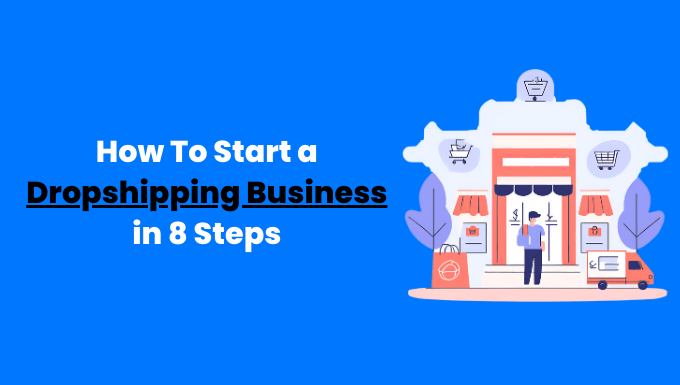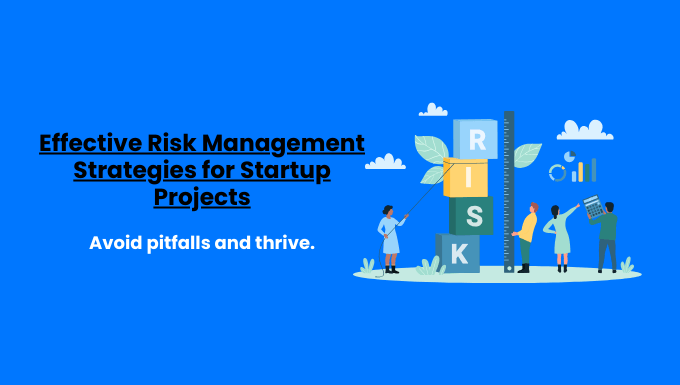Attention, aspiring entrepreneurs! Discover the untapped potential of dropshipping, a business model that’s revolutionizing e-commerce.
Imagine running a thriving online store without the hassle of inventory management or hefty upfront costs. Intrigued?
This comprehensive guide will walk you through how to start a dropshipping business, from choosing your niche to scaling your operations.
Ready to turn your entrepreneurial dreams into reality? Let’s dive in and unlock the secrets of successful dropshipping for beginners!
Key Takeaways:
- Choose a profitable niche and find reliable suppliers to ensure product quality and timely deliveries.
- Build a strong brand identity and user-friendly website to stand out in the competitive e-commerce landscape.
- Implement effective marketing strategies, including social media and SEO, to drive traffic and boost sales.
- Focus on exceptional customer service and efficient order management to build a loyal customer base.
- Scale your dropshipping business by expanding your product range and optimizing operations for long-term success.
From selecting profitable niches to leveraging cutting-edge technology for seamless operations, we cover everything you need to embark on this lucrative journey.

Contents
TogglePropel your entrepreneurial dreams into reality as we delve into the essentials of launching a dropshipping business in 2024.
Why Start a Dropshipping Business?
1. Minimal Startup Costs
Forget about the hefty upfront investments needed in traditional retail.
Dropshipping allows you to kickstart your business without buying inventory beforehand. This significantly reduces your initial costs and financial risks.
2. Low Overhead
No more concerns about managing a warehouse or stocking up on inventory. By cutting out these expenses, your overhead costs decrease.
All you require is a laptop and an internet connection to launch your dropshipping business.
3. Flexible Location
Picture yourself running your business from a cozy café, a beachside cabana, or even your living room.
With Dropshipping, as long as you have an internet connection to communicate with suppliers and customers, you’re all set. The world becomes your office!
4. Wide Selection of Products
Without the commitment to pre-purchasing items, you have the freedom to offer a diverse range of products to your customers. From trendy gadgets to fashionable apparel, the possibilities are endless.
5. Easier Market Testing
Interested in exploring a new market or niche? Dropshipping enables you to experiment without the fear of being stuck with unsold inventory.
Test the waters, analyze the results, and adjust your strategy accordingly—all without breaking the bank.
How to Start a Dropshipping Business
Starting a dropshipping business is an exciting journey that requires meticulous planning and flawless execution for success.
From selecting the right niche to effectively marketing your products, every step is crucial in shaping your business.
Let’s explore essential strategies and tips to kickstart your dropshipping venture.

1. Choose a Dropshipping Business Niche
Before delving into dropshipping, selecting a niche that aligns with your interests and has a viable market is essential.
Here’s how you can narrow down your niche selection:
- Identify Your Niche: Explore your passions, hobbies, and expertise to pinpoint potential niches.
- Understand Your Target Audience: Conduct thorough market research to comprehend the needs and preferences of your target audience.
- Importance of Market Research: Analyze market trends, competition, and demand to validate your niche selection.
2. Find Dropshipping Suppliers
Establishing partnerships with reliable suppliers is crucial for a seamless supply chain in your dropshipping business.
Consider these tips when choosing suppliers:
- Selecting Reliable Suppliers: Look for suppliers known for quality products and timely deliveries.
- Building Strong Relationships: Foster open communication, set clear expectations, and cultivate a lasting partnership for mutual success.
3. Build Your Business Brand Identity
Creating a strong brand identity is vital for standing out in the competitive dropshipping landscape.
Here’s how you can establish your brand:
- Choose the Right E-commerce Platform: Select a platform that meets your business requirements and allows for scalability.
- Set Up Your Online Store: Customize your store design, product listings, and branding elements to reflect your brand identity.
- Importance of User-Friendly Website Design: Ensure your website is easy to navigate, visually appealing, and optimized for mobile devices.
4. Design Your E-commerce Website
Crafting a visually appealing and user-friendly website is crucial for attracting and retaining customers.
Here are key strategies to enhance your website design:
- Easy Navigation: Implement clear category navigation for easy product discovery.
- Mobile Responsiveness: Optimize your website for mobile devices to cater to the increasing number of mobile shoppers.
- Fast Loading Times: Improve website speed by optimizing images, and scripts, and leveraging caching.
- Secure Payment Options: Offer secure payment gateways and SSL certification to build customer trust.
- High-Quality Imagery: Use high-resolution images to effectively showcase your products.
- Informative Product Descriptions: Provide detailed and accurate descriptions to assist customers in their purchase decisions.
- SEO Optimization: Optimize your website for search engines to enhance visibility and attract organic traffic.
- User Reviews: Encourage customer feedback and reviews to establish credibility and trust.
- Clear Call to Action (CTA): Guide users toward making a purchase with prominent CTAs.
- Consistent Branding: Maintain brand consistency in design elements, colors, and messaging across your website.
5. Choosing Products to Sell
Selecting the right products is pivotal for the success of your dropshipping business. Consider these factors when choosing products:
- Product Quality and Supplier Reliability: Partner with suppliers offering high-quality products to ensure customer satisfaction.
6. Prepare the Dropshipping Business Finances
Effective financial management is essential for the sustainability of your dropshipping business.
Consider these financial strategies:
- Create a Realistic Budget: Allocate funds for expenses, marketing, and emergencies to maintain financial stability.
- Automate Routine Tasks: Streamline operations by automating tasks like inventory management and order processing.
- Diversify Your Product Range: Offer a variety of products to appeal to a broader customer base and mitigate risks.
- Plan for Taxes: Understand your tax obligations and integrate them into your financial planning.
7. Register Your Dropshipping Business as a Legal Structure
Formalizing your business as a legal entity provides protection and legitimacy.
Follow these steps to register your business:
- Choose the Right Legal Structure: Select a legal structure that aligns with your business goals and offers liability protection.
- Form an LLC: Consider forming a Limited Liability Company (LLC) to separate personal and business assets.
- Select a Registered Agent: Appoint a registered agent to handle legal correspondence on behalf of your business.
- File Your Articles of Organization: Submit the necessary documents to register your business with the state.
- Get an Employer Identification Number (EIN): Obtain an EIN for tax purposes and business identification.
- Set Up a Business Bank Account: Keep personal and business finances separate for clarity and organization.
8. Marketing Your Dropshipping Business
Effective promotion is essential for driving sales and expanding your customer base.
Consider these marketing strategies:
- Social Media Marketing: Utilize platforms like Facebook and Instagram to showcase products and engage with customers.
- Email & SMS Marketing: Keep customers informed about promotions and updates through targeted messages.
- SEO (Search Engine Optimization): Optimize your website for search engines to improve visibility and attract organic traffic.
- Content Marketing: Create valuable content to educate and engage your audience.
- Retargeting Campaigns: Re-engage with customers who have shown interest in your products.
- Customer Reviews and Ratings: Encourage customer feedback to build trust and credibility.
By following these strategies and tips, you can lay a solid foundation for your dropshipping business and set yourself up for success in the competitive e-commerce landscape.
Managing Your Dropshipping Business Like a Pro
Customer service, inventory management, and handling returns and refunds are essential components of running a successful dropshipping business.
Let’s dive into some key strategies to master these aspects and elevate your dropshipping game.
Customer Service: The Backbone of Your Business
Customer service is the cornerstone of a successful dropshipping business. An astounding 89% of customers are more likely to make a repeat purchase after a positive customer service experience.
To enhance customer service in your dropshipping business, consider the following strategies:
- Dedicated Email Address: Create a dedicated email address for your dropshipping business to streamline communication with customers, ensuring timely responses and building trust.
- Refunds Without Returns: Offer refunds without necessitating customers to return the product, especially when return shipping costs surpass the product value, showcasing your commitment to customer satisfaction.
Efficient Order and Inventory Management
While you may not physically handle inventory in dropshipping, efficient inventory management remains critical.
To excel in dropshipping inventory management, implement the following tactics:
- Inventory Management Software: Utilize specialized software to seamlessly track inventory levels from multiple suppliers, ensuring accurate stock information and preventing stockouts.
- Reliable Supplier Partnerships: Cultivate strong relationships with reliable suppliers to guarantee a steady product supply, minimizing delays and enhancing customer satisfaction.
Dealing with Returns and Refunds
Managing returns and refunds professionally is vital for upholding your brand reputation.
Implement these strategies to handle returns and refunds seamlessly:
- Clear Policies: Clearly communicate your return and refund policies on your website for easy access by customers, fostering transparency and trust.
- Store Credit Option: Providing store credit as an alternative to refunds can incentivize repeat purchases from satisfied customers, boosting customer loyalty and retention.
Remember, exceptional customer service, efficient inventory management, and seamless returns and refund processes are key pillars in building a successful dropshipping business.
Scaling Your Dropshipping Business
Are you ready to elevate your dropshipping business to new heights? Scaling your business involves expanding your reach and increasing sales.
By establishing a strong brand, optimizing processes, and diversifying your product range, you can position yourself for success in the competitive e-commerce landscape.
Let’s explore practical steps to effectively scale your dropshipping business.
Creating a Brand Identity
Building a robust brand identity is essential for growing your online store and maximizing profits.
Here are key elements to focus on:
- Logo and Brand Colors: Craft a memorable logo and select brand colors that embody your brand’s essence.
- Packaging and Thank You Cards: Personalize your packaging or thank you cards to create a lasting impact on customers.
- Brand Values: Define your brand’s core values, whether it’s a social cause or a unique selling proposition.
- Voice and Tone: Develop a consistent voice and tone that resonates with your target audience.
- Social Proof: Leverage user-generated content and social proof to establish trust with your customers.
Choosing the Right Suppliers
Selecting reliable suppliers is pivotal for the success of your dropshipping business.
Consider the following factors when choosing suppliers:
- Scalability: Ensure your suppliers can scale to meet your growing demands.
- Product Quality: Verify that your suppliers maintain consistent product quality to uphold your brand reputation.
- Backup Suppliers: Have backup suppliers in place to address any potential supply chain disruptions.
Expanding Product Range
Expanding your product range strategically can help attract new customers and boost sales.
Here’s how you can do it effectively:
- Data Analysis: Analyze your purchase data to identify customer segments that can be targeted with new products.
- Brand Alignment: Ensure all new products align with your brand promise and resonate with your target audience.
- Product Optimization: Identify underperforming products and consider removing them to streamline your offerings.
Case Studies: Successful Dropshipping Businesses
Let’s draw inspiration from successful dropshipping businesses that have scaled their operations effectively:
- Articture: This home improvement store stands out by leveraging high-quality photography, active social media marketing, and private labeling.
Advantages and Disadvantages of Dropshipping
So, you’re considering venturing into the world of dropshipping, are you? Hold on tight because we’re about to delve into the advantages and disadvantages of this trendy business model.
Let’s dissect it, shall we?
Advantages of Dropshipping
- Low Startup Investment: Bid farewell to hefty upfront costs! With Dropshipping, you can wave goodbye to the need for stocking up on inventory. This translates to less risk and more capital in your pocket to allocate to other areas of your business.
- Easy to Set Up: Who has time for complex setups? Not you! Dropshipping is a breeze to kick off. No need to worry about managing inventory or shipping logistics. You can start selling products in no time, hassle-free.
- Scalability: Ready to elevate your business to new heights? Dropshipping has got your back. As your business expands, you can effortlessly broaden your product range and reach more customers without fretting about storage space or inventory management.
- Risk Reduction: Rest easy knowing that unsold stock is a thing of the past. Since you don’t maintain any inventory, the risk of being stuck with unwanted products is eliminated. Talk about a stress-free business model!
Disadvantages of Dropshipping
- High Competition: With great rewards comes great competition. Dropshipping is a go-to option for many entrepreneurs, which means you’ll need to put in extra effort to stand out from the crowd and draw customers to your store.
- Low Control: Control enthusiasts, beware! As a dropshipper, you’ll have limited control over product quality, stock levels, and shipping times. This lack of control can sometimes result in customer dissatisfaction and potentially tarnish your brand’s reputation.
- Lower Profit Margins: While the low startup costs are advantageous, the downside is that profit margins in dropshipping can be on the lower side. You’ll need to boost your sales volume to see substantial profits flowing in.
- Dependence on Suppliers: Your suppliers hold the keys to your kingdom. Any issues with product quality, stock availability, or shipping can disrupt your business operations. It’s akin to walking on a tightrope without a safety net.
People Also Asked
1. Is Dropshipping Easy to Start?
Starting a dropshipping business is an exciting adventure, offering a straightforward entry into the entrepreneurial world. While it eliminates the need to manage inventory or deal with upfront costs, it requires dedication and a long-term perspective.
Setting up a dropshipping business is relatively simple, but sustaining zero costs can be challenging.
To succeed, focus on creating an online store, finding reliable suppliers, and promoting your products. Remember, investing time or money is essential to make it work.
2. How Profitable is Dropshipping?
Dropshipping can be highly profitable, with average profit margins ranging from 15% to 20%, depending on your niche and pricing strategies.
Successful Dropshippers can even achieve profits of 20% to 30% per sale, translating to annual earnings of up to $100,000.
To maximize profitability, concentrate on selecting high-demand products, refining your marketing strategies, and establishing strong relationships with trustworthy suppliers.
3. Can You Start a Dropshipping Business for Free?
Yes, you can launch a dropshipping business with minimal upfront costs. However, maintaining a zero-cost operation requires effort.
To run a cost-effective dropshipping venture, utilize free services, platforms, and plugins.
Take advantage of free trials, opt for budget-friendly services, and invest time in researching profitable products to kickstart your business.
4. Is Shopify Good for Dropshipping?
Undoubtedly, Shopify is an excellent platform for building your dropshipping business.
It seamlessly connects you with multiple vendors who handle product stocking, packing, and shipping without significant upfront expenses.
Create an attractive product range on your Shopify store, enhance your brand presence through effective marketing strategies, and allow your dropship vendors to manage operations behind the scenes.
5. Can I Dropship on Shopify with No Inventory?
Yes, you can operate a dropshipping business on Shopify without investing upfront in inventory.
Leveraging the dropshipping model, you can avoid stocking products before making a sale.
Partner with reputable dropshipping suppliers to display their products on your website, and when a customer places an order, simply relay the details to your supplier. They will handle everything from charging you for the goods to packaging and shipping the order.







